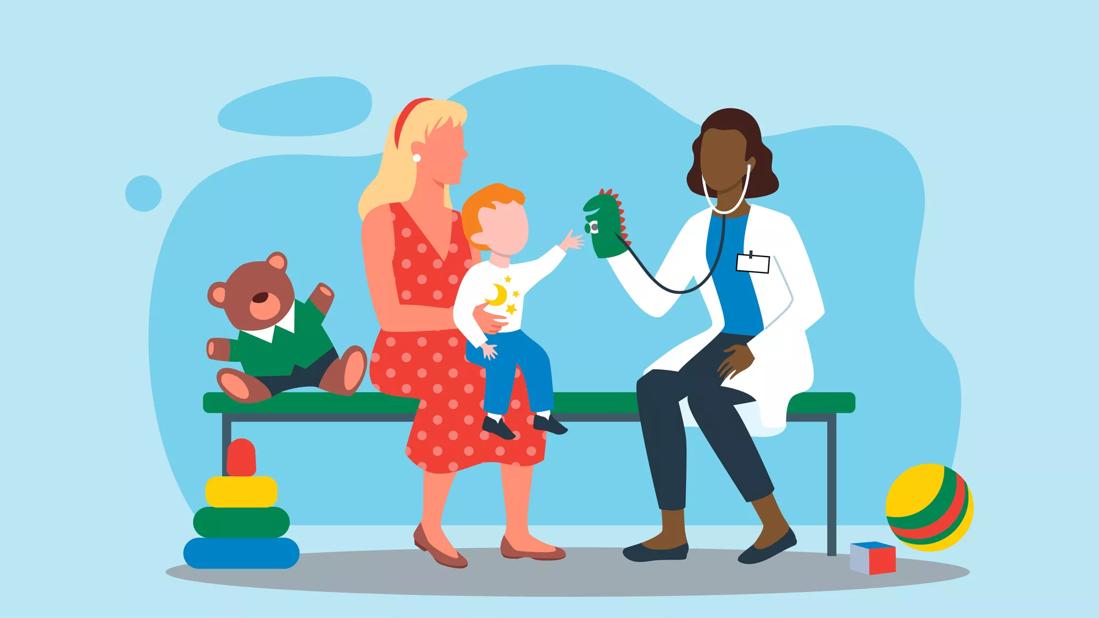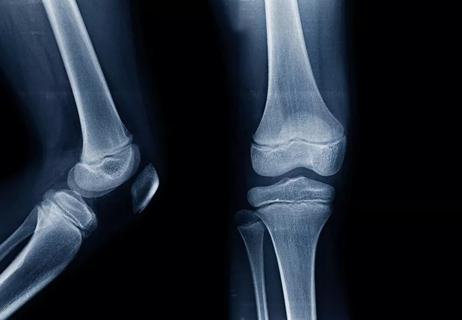Treatments are designed to help with growth hormone deficiency, which can affect your child’s height

There are so many milestones your child hits in the first couple years of their young life: first step, first birthday, first word.
Advertisement
Cleveland Clinic is a non-profit academic medical center. Advertising on our site helps support our mission. We do not endorse non-Cleveland Clinic products or services. Policy
And when you visit your child’s pediatrician, they may ask about these indicators, while also doing their own observation on your child’s growth journey by measuring their weight and height. In some cases, your pediatrician may suggest growth hormone therapy, also known as HGH therapy.
“Growth hormone therapy is a medication given by a daily injection to treat growth hormone deficiency (GHD) and help children grow to their full potential,” explains pediatric endocrinologist Roy Kim, MD.
If your child’s body doesn’t make enough human growth hormone (HGH) — which is produced by their pituitary gland — it can lead to poor height growth. This condition is called growth hormone deficiency and is the most common hormonal disorder causing slow growth in children. Other medical conditions such as chronic kidney disease, Turner syndrome and Prader-Willi syndrome can also cause slow growth that can be treated with HGH therapy.
“Your child may be diagnosed with growth hormone deficiency because they’re falling off their growth chart, meaning that at their well visits, their height percentile on the growth chart is falling over time,” clarifies Dr. Kim.
Dr. Kim explains how a growth hormone deficiency is diagnosed and what to expect during growth hormone therapy treatment.
Advertisement
To determine if your child has a growth hormone deficiency, your pediatrician or pediatric endocrinologist will conduct a few tests. In addition to reviewing your child’s height measurement and rate of growth, your pediatrician will start with a screening blood test.
“What we’re checking for is insulin-like growth factor 1 (IGF-1), which is produced by the liver. That’s a good indicator of growth hormone sufficiency,” shares Dr. Kim. “If that growth factor is low, and our suspicion is strong enough for growth hormone deficiency based on other factors like nutrition, stage of development and growth rate, we perform what we call a growth hormone stimulation test.”
A growth hormone stimulation test is a little more involved.
“After fasting overnight, a child is given two kinds of medicine that stimulate the pituitary gland to release growth hormone,” he says. “And then a blood sample is collected every 30 to 60 minutes for several hours.”
Those samples are sent to a lab for evaluation — and if levels are low, your child will be diagnosed with growth hormone deficiency.
“If a child has growth hormone deficiency, we take a look at the pituitary gland with an MRI scan,” says Dr. Kim. “The vast majority of the time, it will show a normal appearing pituitary or a pituitary gland that may be small. In a scenario where growth hormone is low, but the pituitary looks normal, it’s called an idiopathic growth hormone deficiency.”
Another test your pediatrician may suggest? Checking the bone age of your child’s left hand with an X-ray.
“In that X-ray, we’re looking at the growth plates in the fingers and then the wrist,” he explains. “We can determine what the potential for future growth is for that child. Frequently, children with growth hormone deficiency have a bone age that’s younger than their calendar age.”
You may come across several different brands of growth hormone treatment. The most common method is a daily injection, but weekly injections have recently become available and are considered safe and effective.
Your pediatrician can help you determine which brand and method is best for you and your child.
And Dr. Kim says that body weight is used to help guide the initial dose.
“Then, over time, we use factors like their growth rate, blood test results and how their weight changes to help us determine those increases,” he adds.
Your child is about to start growth hormone therapy. How can you and your child prepare? What should you expect? Dr. Kim provides the following guidance.
Your doctor will determine the right dose for your child, but then, you’ll need to administer it at home through a subcutaneous injection, which will need to be stored in a fridge.
Advertisement
“It can be injected anywhere where you can pinch up the skin,” says Dr. Kim. “Most commonly, the injection can be given in the thighs, abdomen or buttocks area. And it’s always a good practice to rotate injection sites so the skin can heal.”
Many options are also available in pen form and contain multiple treatments where you can adjust the dose based on your pediatrician’s instructions. This form of treatment can be maintained at room temperature.
And when you give your child their injection, it’s important to pay attention to the time of day.
“It turns out our bodies make most of our growth hormone in the evening,” notes Dr. Kim. “We try to mimic that by giving a shot at night.”
“After a child starts growth hormone therapy, we would expect them to be on it until their growth plates are closed and their growth slows on the growth chart,” says Dr. Kim. “The duration depends on when they were diagnosed — we have children on this therapy anywhere from two or three years to their whole life.”
And what type of results can you expect while your child is using growth hormone therapy?
Dr. Kim says that you can hope to see a noticeable increase in growth rate over six to 12 months of treatment.
“After one to two years of treatment, we often see growth rates go from less than one or two inches per year to double that rate after growth hormone has started,” he says.
Advertisement
But how long your child will need to be on a growth hormone treatment varies from child to child. To monitor your child’s progress, you’ll meet with a pediatric endocrinologist a few times a year and then receive a blood test and X-ray at least once a year.
Growth hormone therapy can cause certain side effects, like:
“If a child has diabetes, it could make the blood sugar higher, but it doesn’t cause diabetes,” stresses Dr. Kim. “It also doesn’t cause scoliosis, but rapid childhood growth can magnify or bring out scoliosis. We screen for complications during monitoring visits.”
Rarely, some children may experience problems with their hips known as slipped capital femoral epiphyses (SCFE).
“If we suspect this, we might order a hip X-ray,” says Dr. Kim. “Treatment can include stopping the growth hormone, but if it’s severe, the child may need an orthopaedic consult and possible surgery.”
If your child experiences negative side effects of growth hormone therapy treatment, Dr. Kim says you should talk to their pediatric endocrinologist.
You may be concerned about the cost associated with growth hormone therapy, but Dr. Kim says in many cases, your health insurance will cover treatment if there’s a growth hormone deficiency.
Advertisement
“But what’s variable is how much the insurance company will cover it and how much cost falls to the family,” clarifies Dr. Kim.
There are a few other conditions where growth hormone is typically approved by health insurance, he says.
“This includes children who are born with low birth weight and then grow slowly as infants. Also, children with severe kidney disease who are growing poorly can also qualify for growth hormone. There are several syndromes — Turner syndrome, Noonan syndrome and Prader-Willi syndrome — where short stature may be a feature,” Dr. Kim adds. “For children affected by those syndromes, they don’t need a growth hormone test. They just have to have these diagnoses.”
Growth hormone therapy has come a long way from when it first started in the 1950s.
“In the early days of growth hormone therapy, it used to be derived from human cadaver pituitary glands and that posed some risk of infections,” shares Dr. Kim. “But for many decades now, growth hormone is produced in a lab.”
He adds that most children who take growth hormone therapy do so without any adverse effects.
It’s important that you raise all concerns and questions with your pediatrician before making the decision about whether growth hormone therapy is right for your child
“Our goal with growth hormone therapy is to give the body back what it would normally make,” encourages Dr. Kim.
Learn more about our editorial process.
Advertisement

Most males usually stop growing by age 18, but some may continue growing into their 20s

Globally, the average height for men ranges from 5 feet 3 inches to 6 feet 0.4 inches, but varies based on a variety of factors

In the U.S., the average height for women is 5 feet 3.5 inches, and it ranges from 4 feet 11 inches to 5 feet 7 inches around the world

This therapy may be recommended at any age, but it’s commonly started before puberty

You can treat these short-lived symptoms with a warm bath or massage

Facts on nighttime pain from a pediatrician

Weight loss may cause loose, sagging skin and muscle loss to your rear

The best parenting style balances enforcing rules and showing plenty of love

Tips include cutting back on sugar, focusing on exercise and managing stress

It can be harder to let go when you’ve invested time, energy and emotions — but it might be the healthier choice long term